In February 1764 an edition of Faulkner’s Dublin Journal carried a notice advising that, after several meetings of artists, sculptors and architects, the decision had been taken to institute an annual exhibition in the city, ‘as well to excite emulation among themselves as to bring forth latent merit to public view.’ The first such event was announced for the following year, ‘in order to leave every Professor without excuse for not adding something to the collection.’
So began the Society of Artists in Ireland, an organisation that played a brief but critical role in the evolution of the country’s visual arts. Hitherto its practitioners had been grouped with cutlers, stationers and painter/stainers in the Guild of St Luke the Evangelist, and opportunities to display their work in an appropriate setting were rare. In 1738 the writer and philanthropist Samuel Madden had lamented the neglect in Ireland of ‘those politer arts, which are in a manner strangers to our country; I mean sculpture, painting and architecture.’
Determined to address this oversight, Irish artists were clearly inspired by the example of their counterparts in London, who had formed just such a society in 1760 – one that would lead before the end of the decade to the creation of the Royal Academy. Unlike that institution, which this year celebrates its 250th anniversary, in Dublin the Society of Artists only managed to organise exhibitions until 1780, by which date it was already riven with disputes among members. But while the body soon disappeared, it did leave one permanent legacy in the form of a building.
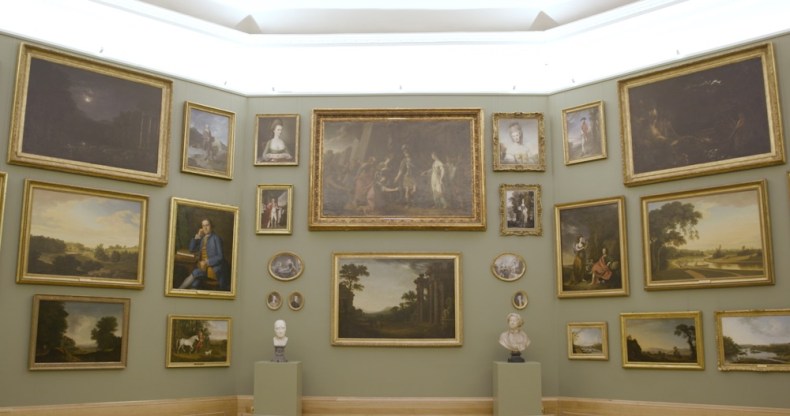
Installation view of ‘Exhibiting Art in Georgian Dublin’ at the City Assembly House, Dublin
Erected in 1766 and part of what is now called the City Assembly House, the top-lit octagonal exhibition chamber is the oldest purpose-built public art gallery in Ireland and Britain, and most likely in Europe. With a diameter of 44 feet and rising some 30 feet, the hall cost more than £1,300; the inability to pay for its construction was one of the main reasons why the Society of Artists disintegrated amid such rancour. Subsequently used for a wide variety of purposes, in recent years the room and its attendant building have been restored as headquarters of the Irish Georgian Society, which this year celebrates its 60th anniversary. To mark that occasion, and the completion of the restoration programme, the society has organised an exhibition that attempts to recreate those held on the premises between 1766 and 1780.
‘Exhibiting Art in Georgian Ireland’ (until 29 July) features 79 works by 43 artists. Some of the best-known names from this period are especially well represented: William Ashford by three pictures and Thomas Roberts by seven. Both were landscape painters and both were noted by English travel writer Richard Twiss, who saw the exhibition in 1775 and later wrote that aside from their contributions ‘almost all the rest were detestable’. Perhaps few other works, then as now, can be deemed of equal merit; but it is slightly regrettable that on this occasion more wall space was not given to 18th-century Ireland’s artistic also-rans. Ashford, after all, is regularly exhibited and Roberts was the subject of a major retrospective in the National Gallery of Ireland in 2009.
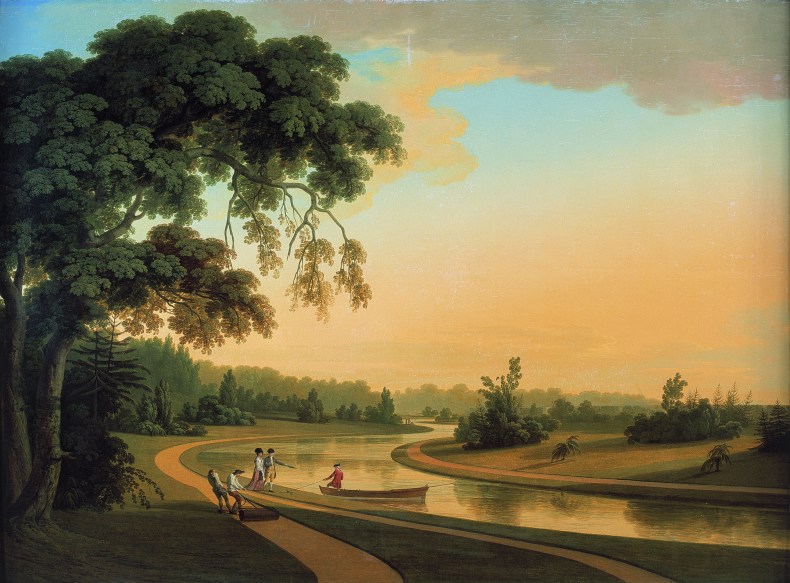
The Sheet of Water at Carton, County Kildare, Thomas Roberts (1748–78)
The real pleasure of the show lies in the presence of less familiar names such as James Forrester, who having studied in Dublin moved to Rome at a young age and remained there until his early death in 1776: two Romantic landscapes reminiscent of Salvator Rosa are included in the present show. Then there is John Trotter, who likewise spent more than a decade in Italy before returning to Ireland: his portrait of a volunteer officer looks indebted to Francis Wheatley, the latter having come to Dublin in 1779 to escape his London debtors. Among the curiosities is a painted wax profile relief of an unknown man by Samuel Percy, a specialist in this minor genre; there are also two furniture drawings attributed to the carver and frame-maker Richard Cranfield, whose real forte was as a real estate developer (he ultimately ended up as owner of the entire City Assembly House building, much to the chagrin of other Society of Artists members).
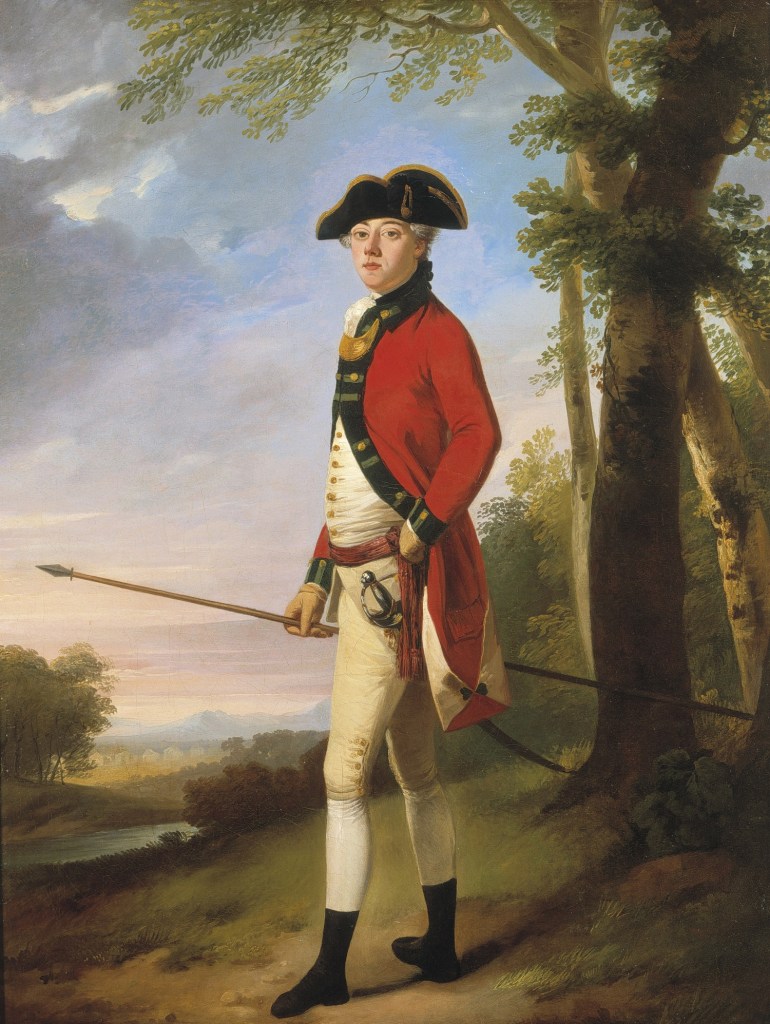
Portrait of an officer of an Irish Volunteer Regiment in a wooded landscape holding a spontoon, John Trotter (d. 1792)
Meriting an exhibition of his own is Matthew William Peters who, having trained in Dublin, Rome and Florence, settled in London, where he initially specialised in producing racy pictures of semi-naked women: the one featured in this show was originally kept behind a curtain. Peters then underwent a Damascene-like conversion. He became an Anglican clergyman and took to painting sentimental pictures with titles such as An Angel Carrying the Spirit of a Child to Paradise (exhibited in the Royal Academy in 1782). But a portrait of Lady Elizabeth Compton demonstrates just how good an artist he could be, and whets the appetite to see more of his work.
‘Exhibiting Art in Georgian Ireland’ fulfils two aims: it demonstrates the dynamism of cultural life in 18th-century Dublin, and it shows just how good were many of the artists then based in the city. The exhibition is accompanied by a handsome and scholarly catalogue, although this would have benefitted from more careful proofing: it is startling to learn, for example, that in London William Hogarth ‘found public criticism hard to bare’. Perhaps he should have spoken to some of the saucy ladies painted by Matthew William Peters.
‘Exhibition Art in Georgian Ireland’ is at the City Assembly House, Dublin, until 29 July. To find out more, visit the Irish Georgian Society’s website.
Unlimited access from just $16 every 3 months
Subscribe to get unlimited and exclusive access to the top art stories, interviews and exhibition reviews.

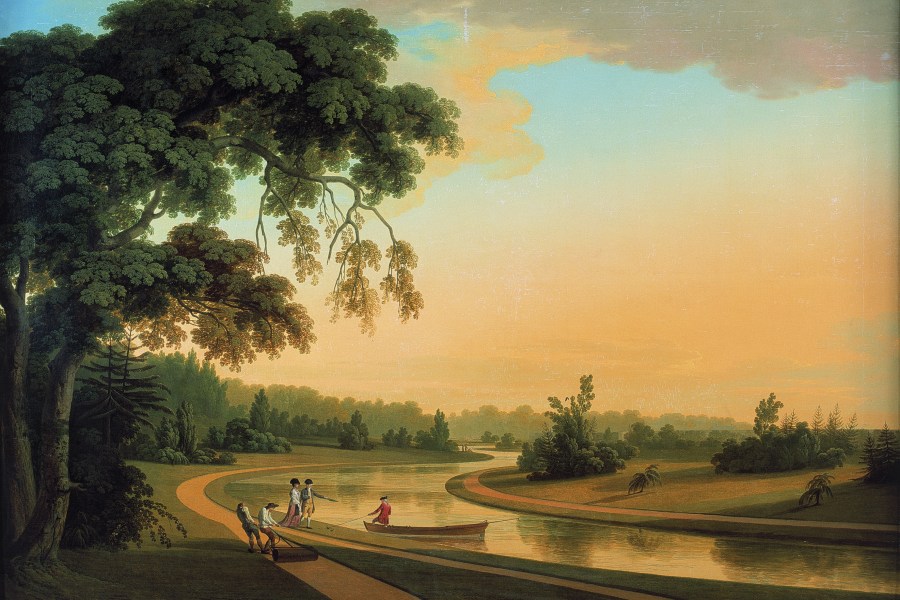
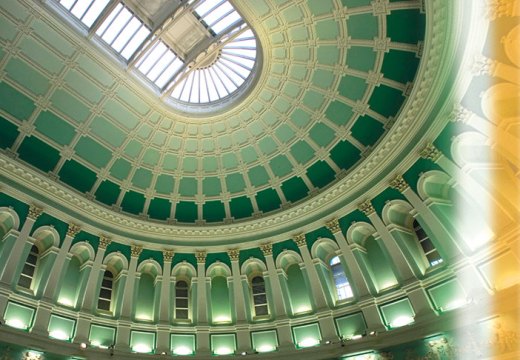
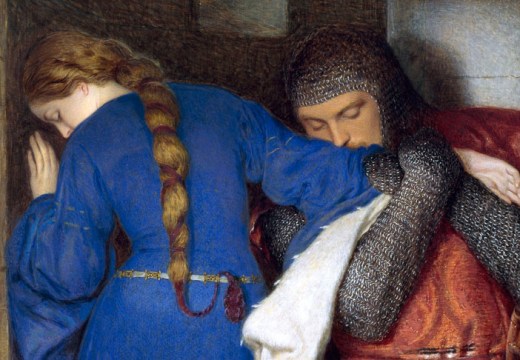
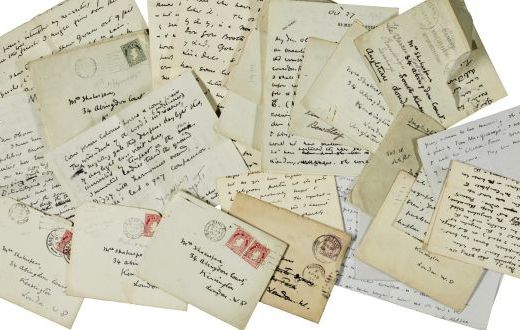









![Masterpiece [Re]discovery 2022. Photo: Ben Fisher Photography, courtesy of Masterpiece London](http://www.apollo-magazine.com/wp-content/uploads/2022/07/MPL2022_4263.jpg)
Why are fathers so absent from art history?